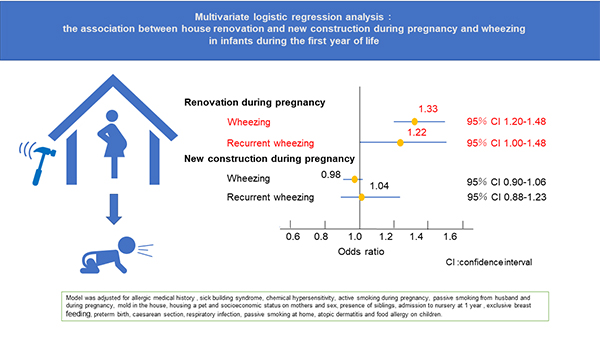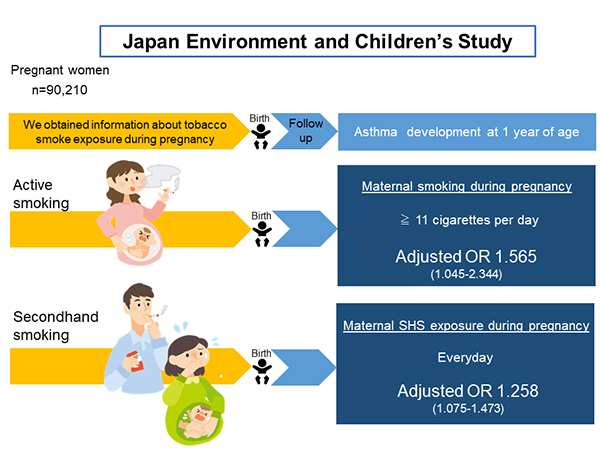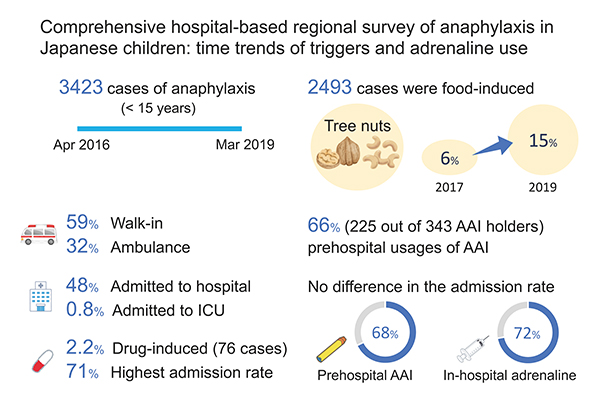Volume 70, Issue 4 (October 2021)
Editor's Choices
Editor’s comment: Many factors have been reported to be related to infant wheezing, including viral infections and passive smoking. In this study, Fujino et al. examined the association between house renovation and new construction during pregnancy and wheezing in infants during the first year of life, using Japan Environment and Children's Study (JECS) data. They found that renovation but not new construction during pregnancy increased the prevalence of wheezing and recurrent wheezing in the first year of life.
Editor’s comment: In Japan, the rate of active smoking in 2015 was 30.1% in men and 7.9% in women. Wada et al. investigated the effect on one-year-olds of maternal exposure to tobacco smoke on wheeze/asthma development, using data from the nationwide birth cohort study in Japan. They found that current maternal smoking and maternal secondhand smoke exposure during pregnancy increased the risks of wheeze and asthma for offspring. They also found that if pregnant women have a history of allergy, the risks of wheezing/asthma in their offspring are further increased by current maternal smoking.
Editor’s comment: Anaphylaxis, a severe allergic reaction that is rapid in onset, can occur in response to almost any foreign substance. The Aichi Medical Association performed a comprehensive survey of pediatric anaphylaxis cases aged <15 years from 87 secondary and 25 tertiary emergency care hospitals in Aichi Prefecture (population 7.5 million) in Japan. They found that food items were the most frequent trigger, followed by exercise after food ingestion and then by drugs. Among food triggers, eggs and milk were the most frequent, but the most significant proportional increase was observed in tree nuts.





